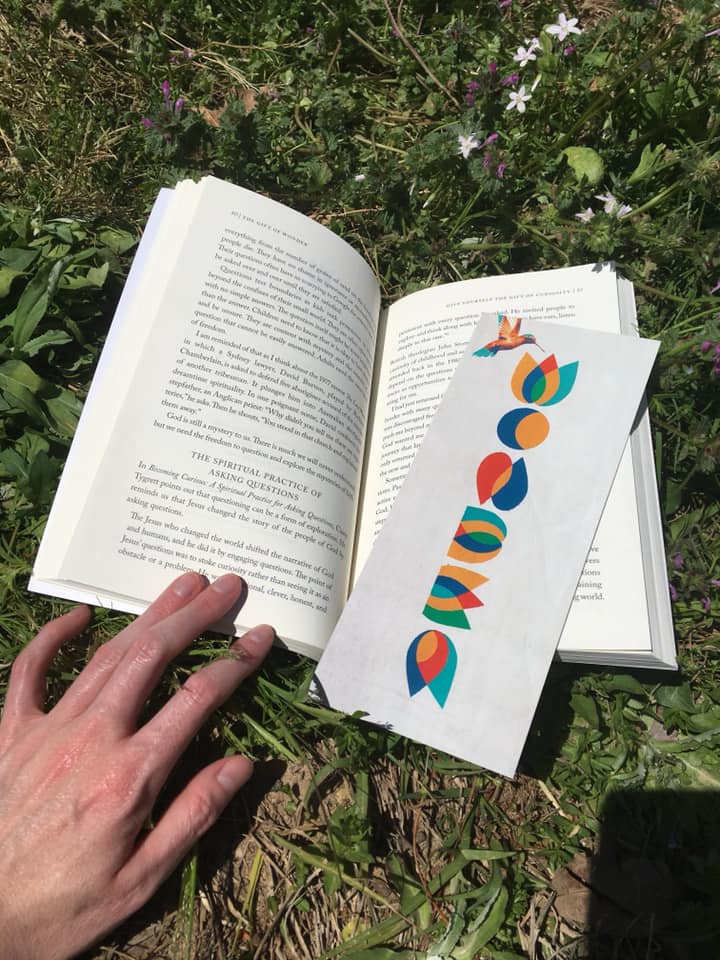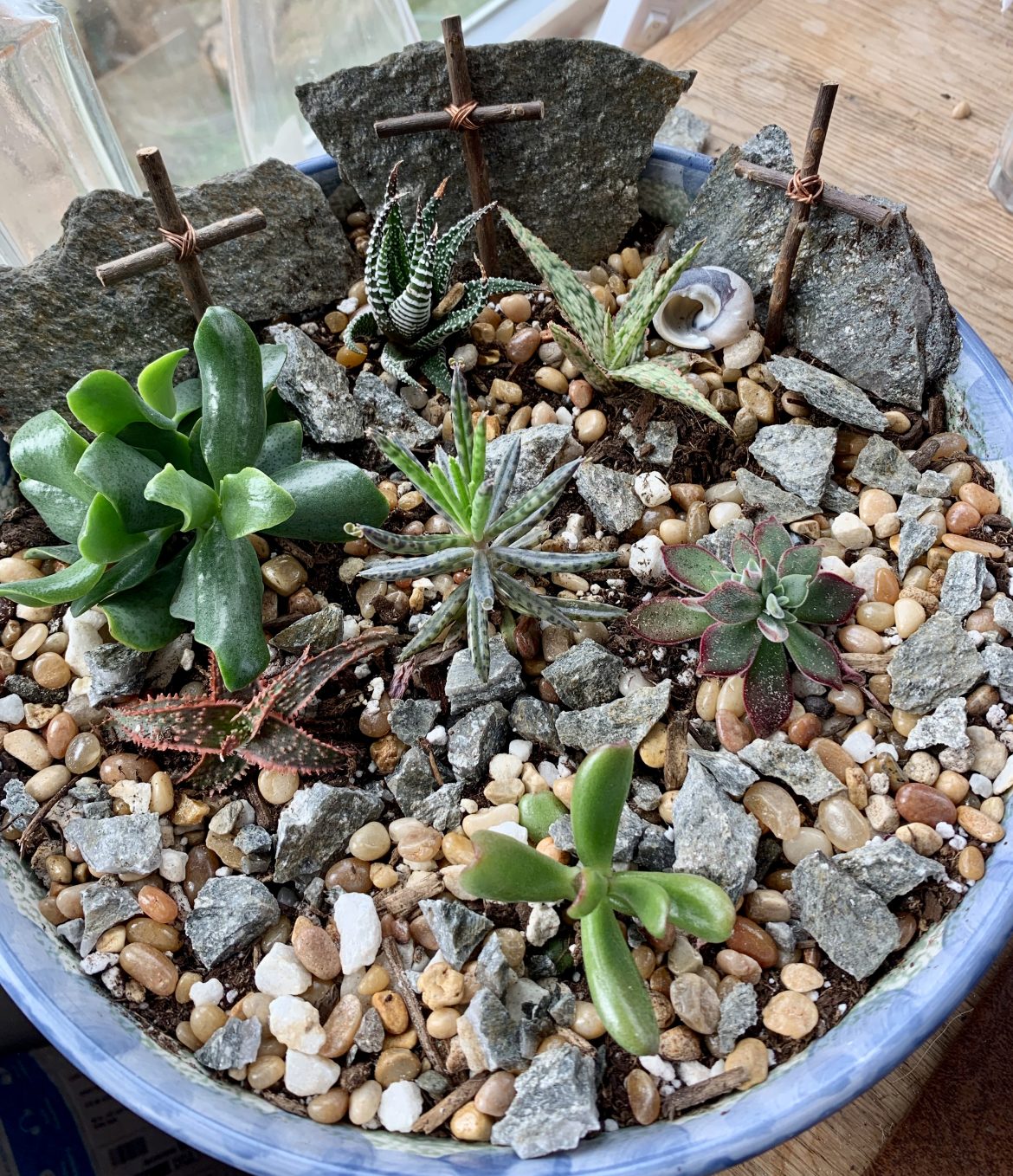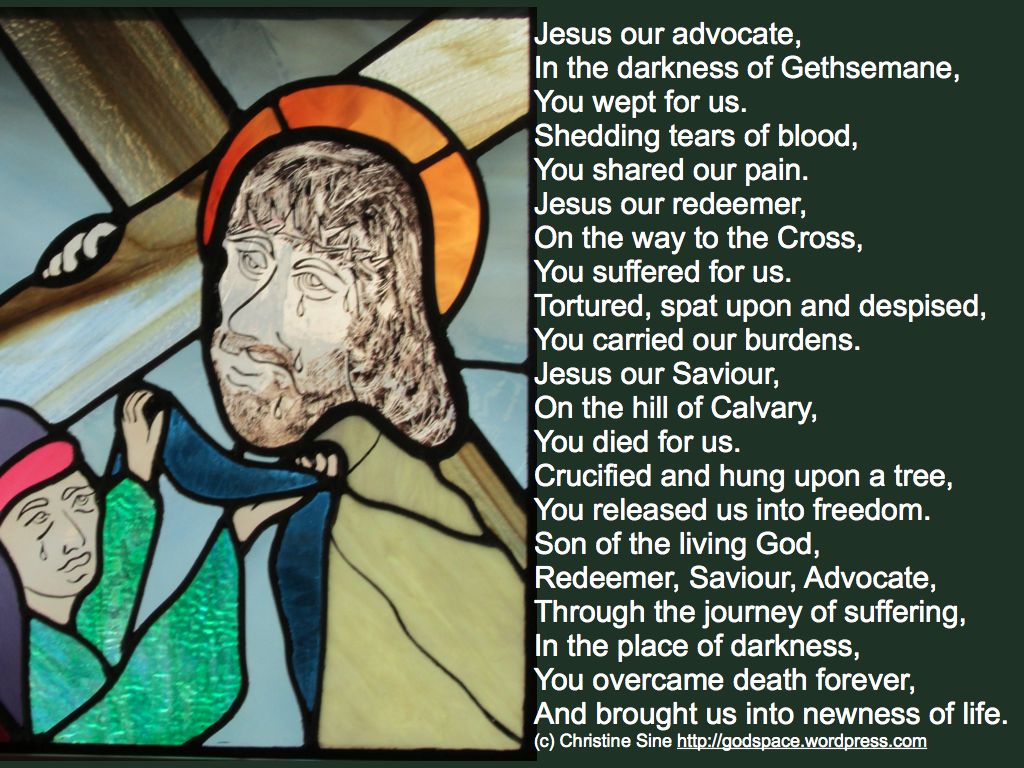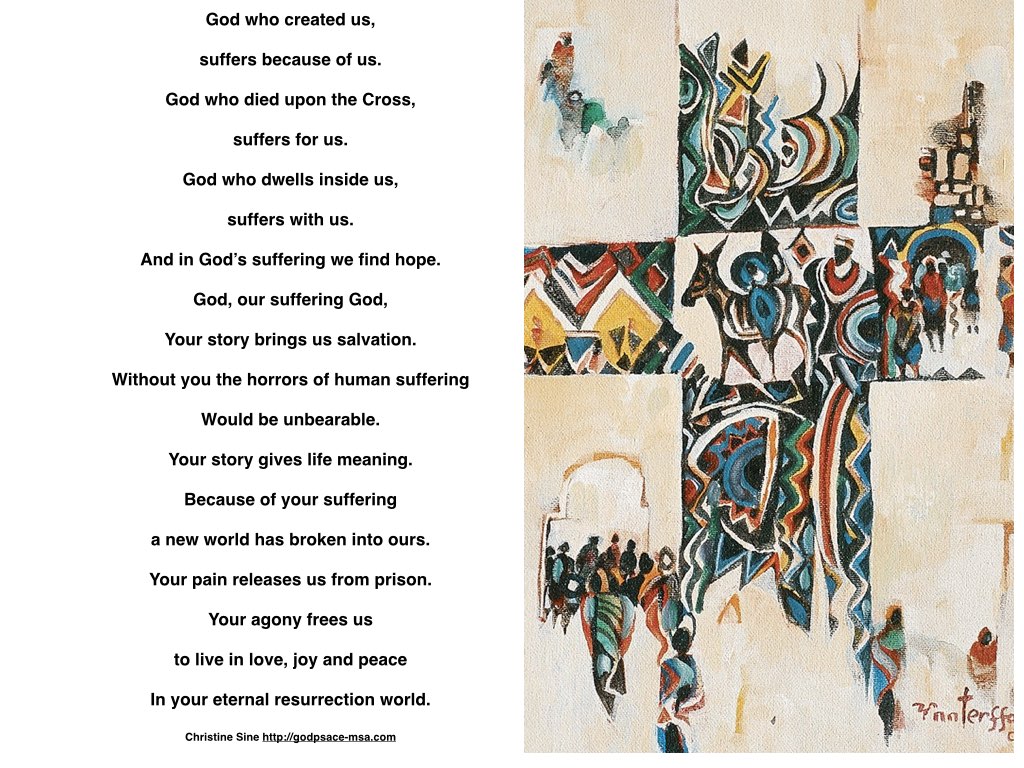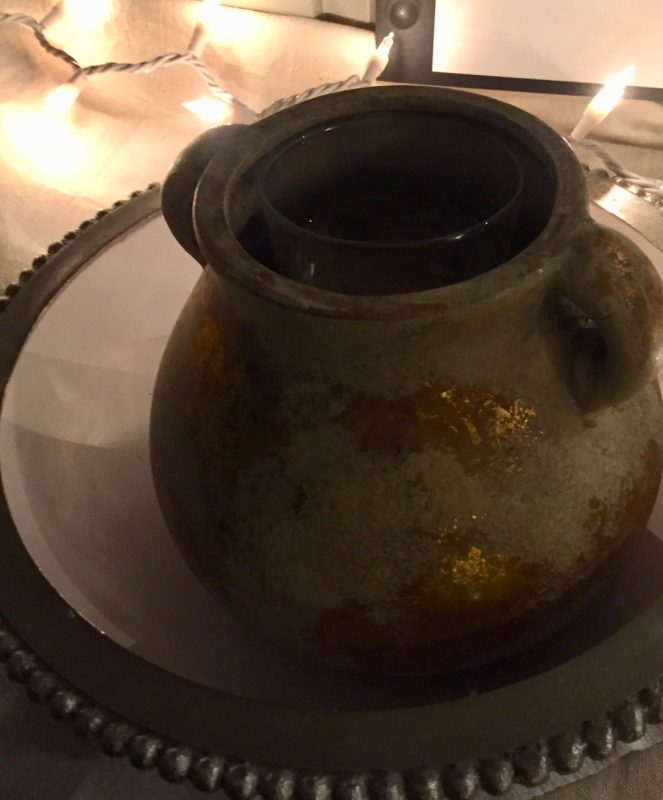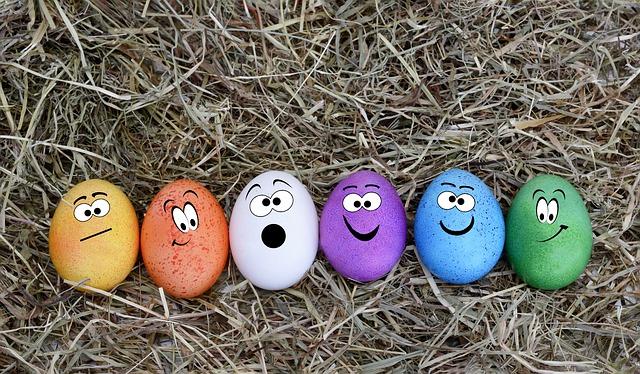I am on a bit of at high! The launch of The Gift of Wonder was amazing and your enthusiasm and affirmation of both me and the book helped make it Amazon’s #1 new release in books on religious rituals. Not quite the way I would have described it but I appreciate it anyway.
More than anything I have enjoyed the comments and photos that some of you have sent. They stir me to new creative spiritual practices and continue to enrich my faith. Arie Gort suggests this book should be read outside in the sunshine surrounded by wildflowers. I read her comment after seeing a photo of the amazing desert bloom in California last week and it made me want to take my shoes off and dance through the flowers.
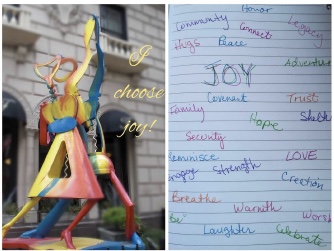
This image shared by HeidiRich Payton onInstagram lighten my day but also distracted me from less enjoyable responsibilities. Please keep your images and comments coming and encourage your friends to send us their creative responses too. We are working to get them posted on The Gift of Wonder Godspace page.
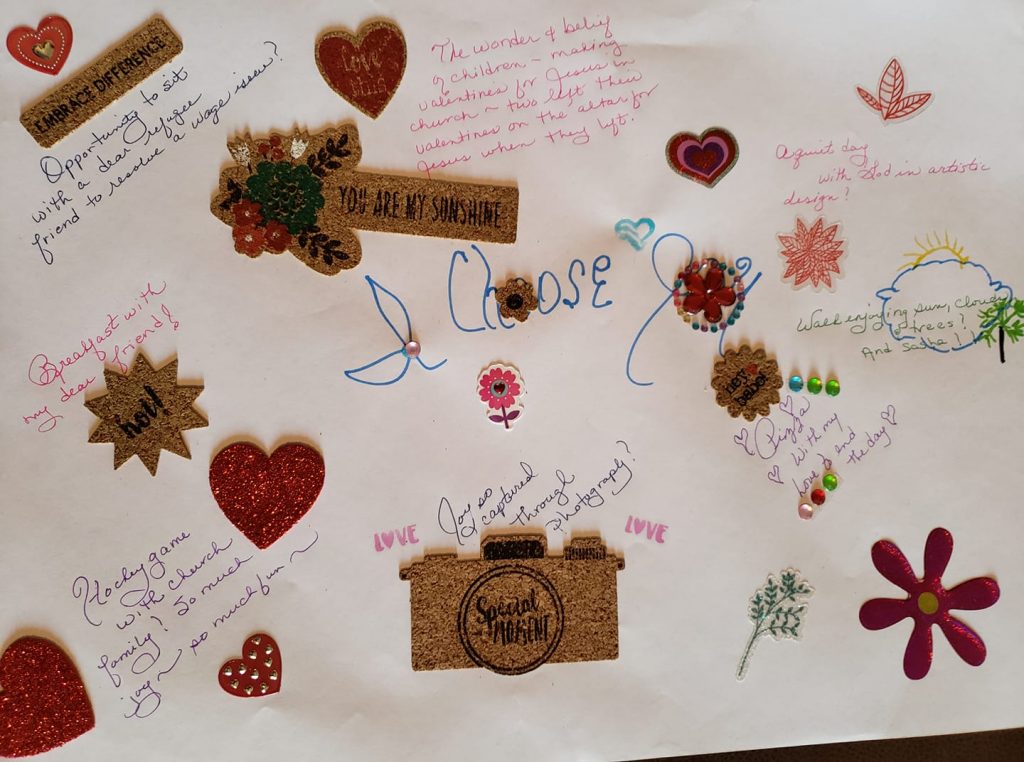
I find that my own response to sharing about the book in workshops and classes is a growing delight and joy in the presence of God. My awe and wonder walks have expanded to include awe and wonder plane trips. From my window I look down at the awe inspiring landscape below me clicking my camera and thanking God for the beauty of what I am seeing. Tragically as I look around I realize that I am often the only person enjoying this beauty. Everyone else seems to have their eyes glued to their screens.
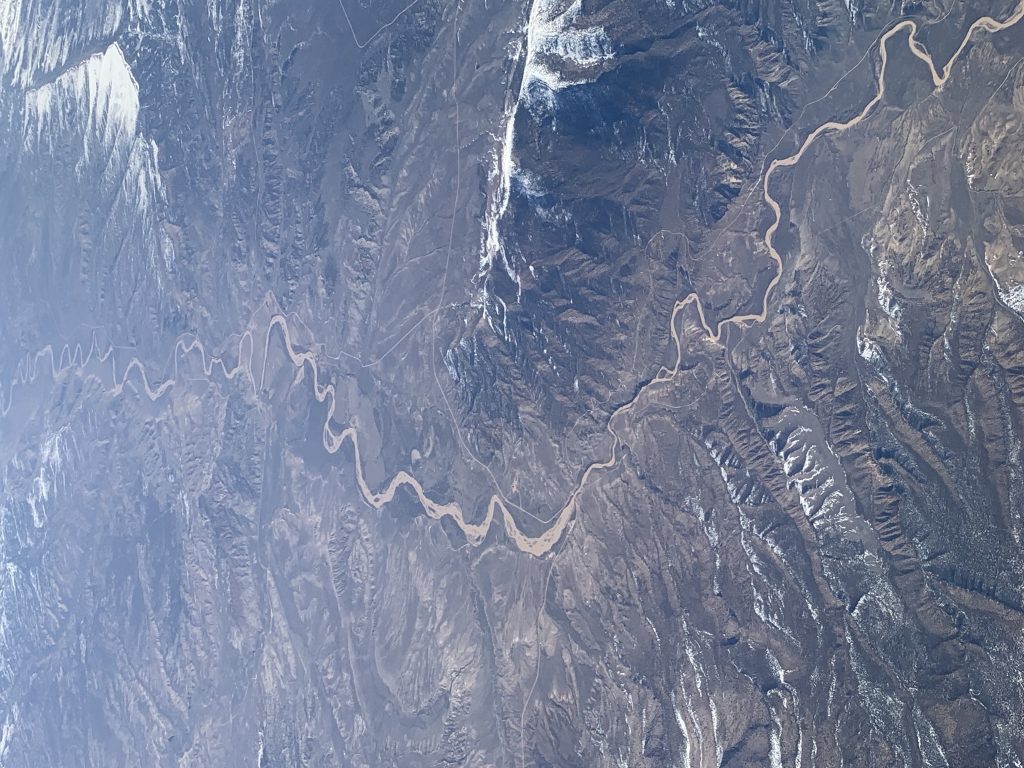
As a response to all of this, we have decided to use the theme “A Season of Awe and Wonder” for the time between Easter and Pentecost this year. We are asking our authors to share about what gives them a sense of awe – be it the wonder of God’s creation or the beauty of God’s image seen in the faces of vulnerable and hurting people. I will share ideas from The Gift of Wonder and some of the lessons I have learned since I finished writing it. If you would like to contribute to this series please let us know.
Thank you for your continued support of the Godspace ministry as well as my personal ministry. I appreciate your prayers at this time as I am feeling a little overwhelmed by the number of interviews and articles that are being requested. I particularly enjoyed this podcast with Doug Pagitt which will give you a good background to The Gift of Wonder if you are still puzzled as to what it is all about.
by Christine Sine
This week I have cheated a little. Instead of breaking down another wall, I decided to rearrange the walls in my Lenten garden. The three remaining walls now form a protective barrier across the back of the garden and in front of the barrier I have planted three crosses. Each time my eyes drifted towards my garden today, my breath caught and my gut churned as I focused on those crosses across the top of the flourishing plants. I was reminded of the pain and suffering Christ endured to make it possible for us to flourish and become whole. What a sacrifice God willingly made to see walls broken down and barriers rearranged in my life and in our world. As Lent draws towards Holy Week that is where most of our eyes are focused. For our loving, caring God no sacrifice was too great to break down the walls of hate and suffering and brokenness in our world.
Ironically I was so focused on the crosses today that it was easy for me to totally miss the beauty of the plants in front of them. Yet as I intentionally focused on the plants and marveled at their beauty, I was reminded that the full glory or God is revealed in the light of the Cross of Christ it is not the Cross itself.
Read Life Differently
I think sometimes our eyes are too focused on the cross. Our story ends on Good Friday rather than Easter Sunday. too focused. In our world too it is easy to focus on the negative, the problems rather than the solution, the images of despair rather than the glimmers of hope.
I think it is time for us to “read life differently’ to see the hope beyond despair, the glimpses of healing and wholeness in the midst of the ravages of disease and heartache, the beauty of new life where death has reigned.
I was thinking about that this week as I talked about my new book The Gift of Wonder and read through the responses people are sending me as they read the book. The joyful images I have been sent, and the comments about awe and wonder have surprised me. My own increasing joy and delight as see their creativity have spurred me to my own new expressions of awe. I have added awe and wonder plane trips to my awe and wonder walks, (yep, I am the one with the window shade open when you are trying to watch a movie on your screen) delighting in the unfolding of God’s beauty beneath me.

Awe and Wonder plane trip
A Daily Dose of Awe and Wonder
Focusing on joy invigorates and empowers us. Awe begets awe. As we take notice of the awe inspiring aspects of our world, we start to notice awe and wonder wherever we go, even in grief ravaged faces and devastated landscapes. Then our faith grows and our belief in the ability of God to transform all things is renewed.
One of my favorite go to places for good news stories is the good news network. Stories like this one about the countries across Africa that are planting a great green wall of trees, convince me that if we enter each day with a sense of awe and wonder and look for the good things God is doing our attitude towards life will change and our ability to see beyond the cross to the new world God is creating will be transformed.
What Is Your Response?
Go for a walk around your neighborhood. What catches your attention? What gives you a sense of awe and wonder? How does this make you feel? How could you incorporate a daily dose of awe and wonder to your schedule? What impact do you think it could have on your life?
Over this last week I have been posting prayers, liturgies and worship resources for Holy week. I have already posted resources for Stations of the Cross but here are some additional resources for Good Friday that I thought you might enjoy. I have interspersed them with images of the crucifixion from different cultures as I find reflecting on these remind me that Christ died for all cultures and all nations.
Celebrating at Home
Posts and Resources
- This post from Lilly Lewin: Freerange Friday: A Good Friday TakeAway has some great ideas for Good Friday.
- Also, consider downloading her Experiential Stations of the Cross.
- Scott Erickson Art shares resources for Good Friday services including Stations of the Cross.
- Take time this week to go through the sessions in the Lenten retreat: Women of the Passion at Sacred Space. “A retreat offers a chance to take a step back from the pressure of daily life, to reflect prayerfully on the current state of your relationships: with God, with the people around you, and with the world.” Very powerful!
- And if you don’t know what Good Friday is about check this.
- Crosswalk.com also provides a great history and readings for Good Friday.
- If you want to get creative: Make a Tiffany Style Cross.
- Lent and Beyond has just updated their Good Friday quotes, poems, prayers and hymns and other resources including music and devotionals for Good Friday.
- Textweek.com is always alive with wonderful resources for the season
- And from Bosco Peters in N.Z. a Good Friday liturgy
- Gone is the Light is a powerful reflective song by Steve Bell.
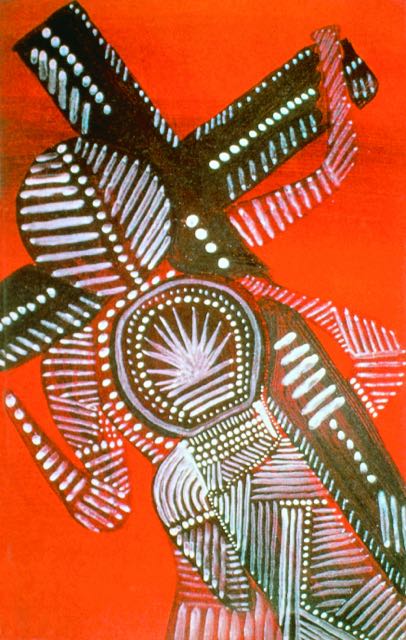
Aboriginal crucifixion
- Many Godspace contributors love to write prayers for each of the significant days during Easter week. Here are some that we have written in the past.
- What’s So Good About Friday – Rowan Wyatt
- The following prayer is one I wrote for Good Friday several years ago.
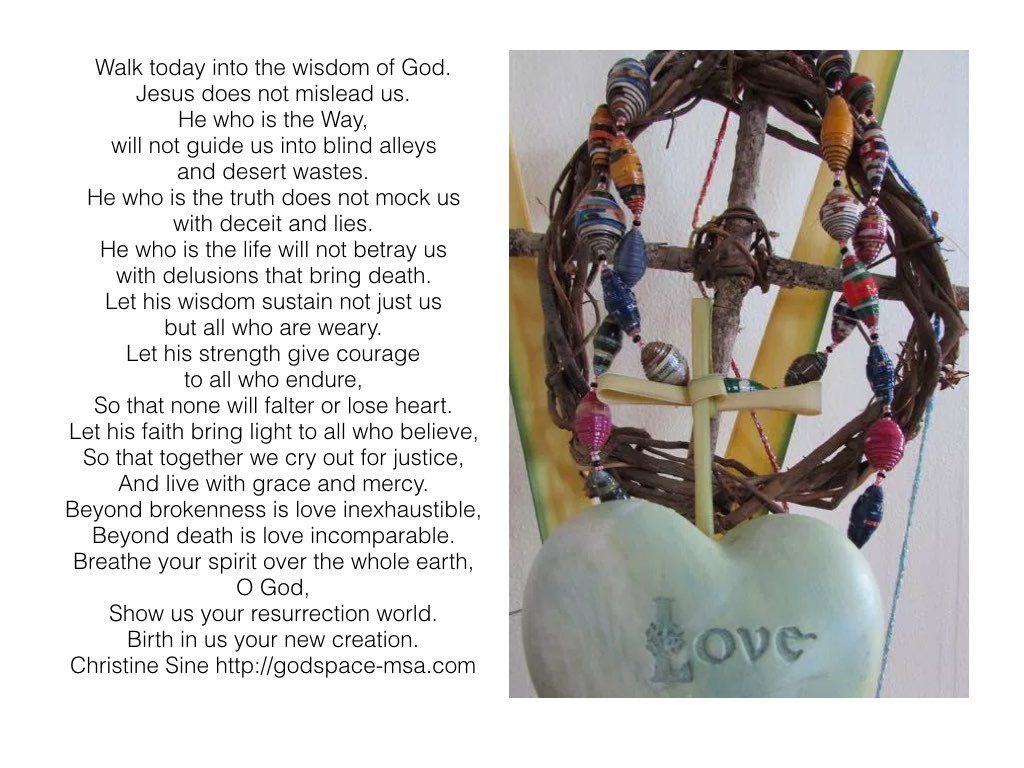 This is the first Good Friday prayer I wrote and still one of the most popular
This is the first Good Friday prayer I wrote and still one of the most popular
The following is part of a liturgy I wrote a couple of years ago that I often return to:
Jesus you took bread and broke it,
You shared it with your friends.
As you were broken to feed us with the bread of life.
Jesus you took wine and poured it out,
Grapes crushed and drained of life.
As you were crushed and drained of your life blood.
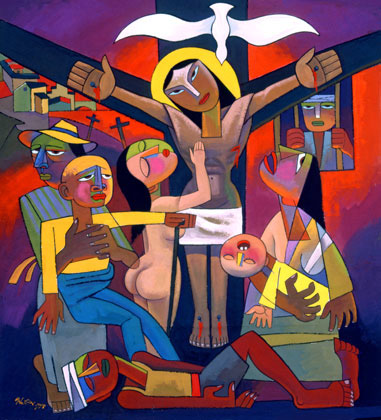
Crucifixion Art by He Qi
Here is part of a longer liturgy designed for church or small group use:
Today we walk with Christ in the dark shadow of the cross,
Knowing we have weighed him down,
Our burdens crushed his shoulders,
His suffering is for us,
For us he willingly endured death.
Let us trust in God alone,
And walk the way of the cross together,
Let us move forward without fear into God’s eternal purposes.
Then we will never know disgrace,
And we will learn to praise our God who never abandons us.
Please check out our complete list of Godspace resources for Lent through Holy Week.
by Lilly Lewin
Two weeks till Easter.
How is it going?
I know many have been on Spring Break holidays already.
Many are busy with projects and homework and just plain living.
We’ve already experienced the beauty of Spring here in Nashville. The tulips are blooming, but most of the daffodils have done their thing. The cherry trees have been gorgeous, but are already loosing their blossoms and their new green leaves are showing through. It’s redbud tree time and the dogwood trees are just beginning to show their glory. My mom wonders if there will be anything left to blossom by Easter morning. Will there be enough color or will everything already look like summer?
I know many of you are in a different season, or you haven’t seen enough spring weather just yet to see the beauty of Spring and all it’s abundance.
Not Enough sun
Not Enough warmth
Not Enough time to notice the changes in the season
Not Enough time to see the beauty around us
That word ENOUGH happens a lot. It has power.
How do you experience the word Enough?
Does it set you free? or does it keep you in the land of fear?
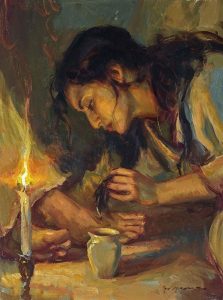 Six days before the Passover Jesus came to Bethany, the home of Lazarus, whom he had raised from the dead. There they gave a dinner for him. Martha served, and Lazarus was one of those at the table with him. Mary took a pound of costly perfume made of pure nard, anointed Jesus’ feet, and wiped them with her hair. The house was filled with the fragrance of the perfume. But Judas Iscariot, one of his disciples (the one who was about to betray him), said, “Why was this perfume not sold for three hundred denarii and the money given to the poor?” (He said this not because he cared about the poor, but because he was a thief; he kept the common purse and used to steal what was put into it.) Jesus said, “Leave her alone. She bought it so that she might keep it for the day of my burial. You always have the poor with you, but you do not always have me.” John 12:1-8
Six days before the Passover Jesus came to Bethany, the home of Lazarus, whom he had raised from the dead. There they gave a dinner for him. Martha served, and Lazarus was one of those at the table with him. Mary took a pound of costly perfume made of pure nard, anointed Jesus’ feet, and wiped them with her hair. The house was filled with the fragrance of the perfume. But Judas Iscariot, one of his disciples (the one who was about to betray him), said, “Why was this perfume not sold for three hundred denarii and the money given to the poor?” (He said this not because he cared about the poor, but because he was a thief; he kept the common purse and used to steal what was put into it.) Jesus said, “Leave her alone. She bought it so that she might keep it for the day of my burial. You always have the poor with you, but you do not always have me.” John 12:1-8
This is the Gospel reading for this weekend.
It’s an interesting look at ENOUGH.
Mary chose to lavish her most valuable possession on Jesus.
Judas was afraid it was too much, and a waste…
Judas was afraid he wouldn’t have enough or couldn’t get enough later.
Mary was living in the abundance of the moment. She wasn’t afraid of what anyone would think. She wasn’t worried that there wouldn’t be enough later.
Judas is living in the land of not enough, a land filled with fear and betrayal.
What about us? How are we living? Are we living in the land of Abundance or living in the land of NOT ENOUGH?
Do we believe we have enough to be lavish?
Are we able to believe in “God’s Enough” and lavish on someone else, and share the abundance?
Can we share that abundance with someone else to show that they are enough?
As we approach Easter, how can we move into the land of enough and the land of abundance rather than living in the land of fear and not enough?
What symbol could you choose to help you remember that in God’s economy there is always enough? And there is really an abundance! (remember the wine at the wedding in Cana and the fish in John 21?) I have a pitcher filled with water on my table to remind me that God has enough for me. What would you choose to help you remember?
I have a pitcher filled with water on my table to remind me that God has enough for me. What would you choose to help you remember?
You might find some oil to put on or to smell to remind you to live in the land of enough rather than in the land of fear and scarcity.

Use the painting of the Anointing at Bethany above, by American Artist Daniel Gerhartz, to help you engage the story. Allow this art or another painting like it, to help you to be lavish in your giving…to help you remember that you are enough, and to help you remember that in Jesus, you have enough to give away to others.
The Stations of the Cross also called The Way of the Cross, consist of prayers and meditations commemoration the Passion and death of Christ. There are fourteen stations each representing an event which occurred during Jesus’ Passion and death at Calvary on Good Friday. The Stations were originally performed many centuries ago by Christian pilgrims who visited the Holy Land. However the Franciscans, who were given custody of the Holy Places in the Holy Land in the 1300s, made it very popular. Countless Christians have all enriched their spiritual lives with this powerful devotion.
During the crusades (1095-1270), pilgrims in the Holy Land often walk in the footsteps of Jesus to Calvary. After the Moslems recaptured the Holy Land pilgrimages were too dangerous and, the Stations of the Cross in churches became a popular substitute pilgrimage throughout Europe.
Stations of the Cross are a Holy Week activity not just restricted to Good Friday. A growing number of churches set up Stations of the Cross at the beginning of Holy Week so that people can walk around them in their own time reflecting on Christ’s suffering and death. Because of that I wanted to get this list up early for those that are still looking for ideas.
There are thousands of resources for Stations of the Cross out there. I have tried to put together a collection from around the world attempting to highlight some of the challenging issues of our turbulent world that are portrayed and have continued adding to that theme this year. You might like to check out the additional images I have posted on Pinterest too.
Most of the images I have collected are far from the traditional stations of the cross. If there are other international images you think should be a part of this collection please add them in the comments. I would like to continue to enrich this list each year and there is still enough time before Good Friday for me to update this post. If you are looking for a fairly traditional set of reflections and images this one on Catholic Online is hard to beat. Enjoy!
Stations of the Cross Kits by our Friends
Godspace contributor, Lilly Lewin, has made her Stations of the Cross kit available through Free Range Worship.
Scott Erickson in Portland has also made variety of fantastic Stations of the Cross kits
- A Stations of the Cross booklet is available as a free download from the Grotto Network.
- Catholic Agency for Overseas Development presents a Powerpoint and Leadership guide for Stations of the Cross for Lent 2023 – Free to download.
- Food for the Poor offers fourteen stations focused on the “suffering [of] Christ in the experience of every person who suffers from poverty or cries out for help”. Scroll to the end to download the pdf version.
- I have posted more images of stations of the Cross on Pinterest.
- Scott Erickson in Portland has also made a fantastic Stations in the Street kit for purchase.
I also love this stations of the cross which my own church St Andrews Episcopal in Seattle has put together using a set of stained glass window panels at the church
Explanation of the stations of the Cross:
- From a Catholic perspective
- From a Protestant perspective
- Another good article on the development of the Stations of the Cross
From Australia
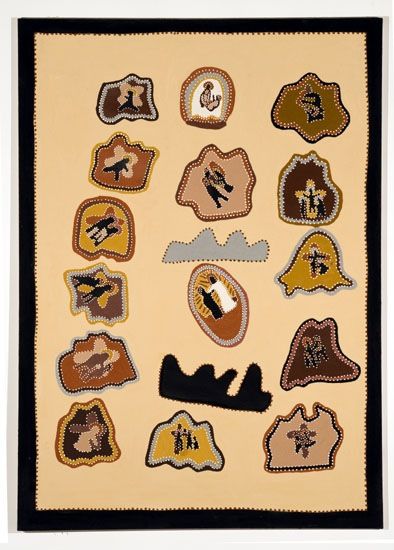
Australian Stations of the Cross – Susan Purdie
This very powerful Stations of the Cross uses the story of Filipino indigenous people as the backdrop for the Stations of the Cross
- These stations are found in the Passion Community in Glen Osmond, Australia
- The Way of the Cross by the Catholic Archdiocese of Sydney
From New Zealand
- Stations of the Cross shown in the Chapel at the Home of Compassion, Island Bay. They are backlit and made of handmade coloured float glass.
- A excellent reflection on John Badcock’s Stations of the Cross by Dr Warren Feeney:
From Middle East and Sudan –
- I also came across this interesting set of Jordanian stamps which Mansour Mouasher has found depicting the Stations of the Cross.
- Rachel Gadsden is a British artist who is exhibited internationally and who works across the mainstream and disability art sectors, presenting cross-cultural visual dialogues that consider the most profound notions of what it is to be human. Her stations of the cross for St Joseph’s Cathedral Abu Dhabi are powerful.
From North America
- This series by Gwynth Leech sets the traditional imagery of the Stations of the Cross in the midst of contemporary conflicts. They were commissioned by Saint Paul’s on the Green in Norwalk Connecticut in 2004. It is a heartrending presentation of the stations of the Cross using images of refugees from Iraq and Sudan as spectators and participants.
- Im/migration Stations of the Cross by Nanette Sawyer. It’s a series of original art, looking through the lens of immigration/migration. How can the Jesus story teach us about immigration/migration issues, and how can the stories and experiences of immigrants and migrants increase our understanding of the Jesus story? Make sure you leave plenty of time for this one. Read the description and then click each station down the side – it is a very profound experience.
- This series by Minnesotan artist Anne Brink is fascinating.
- A good virtual series from the Huffington Post with interesting reflections to meditate on.
- Busted halo always has good liturgical resources and I found this video presentation of The Stations of the Cross to be a good one to spend time reflecting on.
From South America
- A very powerful presentation of the stations from the perspective of liberation theology by Adolfo Pérez Esquivel of Argentina. This is one I like to revisit each year.
- This video is one of the first I put together with photos my friend Tom Balke took on a trip to Ecuador of artwork from Oscar Guayasamin, There is no music but I think it provides a powerful silent meditation for this season.
From Asia
- I enjoyed meditating on this series by a nun in Bangalore India
- And another very beautiful, Korean Stations of the Cross by Korean sculptor Choi Jong-tae from Myeong-dong Cathedral.
From Africa
- I love this stations of the cross from Hekima College, Nairobi, Kenya. The designs were created by Father Angelbert M. Vang SJ from Yaoude, from the Cameroon who was a well-known historian, poet, musician and designer and executed by a Kenyan artist.
- From Nigeria The Fourteen Stations of the Cross: “This rare set of linocuts was printed in 1969 in several editions of about fifty by Bruce Onobrakpeya, an Urhobo man who has become Nigeria’s mast famous – and arguably best – artist.”
- And from Lodwar Cathedral Kenya this series of the Stations of the Cross seen through African eyes is very powerful. Here is one of the images.
From U.K.
- This Stations of the Cross series by Chris Gollon was commissioned by the Church of England for the Church of St John on Bethnal Green, in East London. Gollon took the unusual step of using his own son as the model for Jesus, his daughter as Mary, and his wife as Veronica. Fr Alan Green is cast as Nicodemus, and David Tregunna (Gollon’s friend and agent) as Joseph of Arimathea. The juxtaposition of real figures with imagined ones creates a heightened sense of reality. I think that the images are both compelling and powerful.
- This series by David O’Connell hangs in St Richards Chichester is another powerful series.
- Another series by Linda Sallnow in London
From Europe
The Stations of the Cross by Karel Stadnik, 1973-5, Church of the Virgin Mary in Lhotka, Prague. This is a unique interpretation of the stations in which the a synthetic resin sculpter at each station depicts a different episode of human suffering. The traditional titles of the stations are what helps the observer to make the connection with the life of Christ. According to the web site, “The work was the idea of the local priest Vladimir Rudolf, during the difficult period after Soviet tanks had crushed the “Prague Spring”.”
For Kids:
- Catholic Mom has helpful books and Stations of the Cross for Kids.
- Check out this family Bible study for younger kids set up like stations of the cross.
- Multimedia Stations of the Cross from Loyola Press.
Virtual stations online:
- An excellent online video presentation from Jeruslaem.com I have not watched all of it yet but enjoyed what I watched.
- And from Jonny Baker in England a great idea – QR Stations of the Cross.
- And from Busted Halo as always, an excellent set of virtual stations of the cross. These stations relate to Jesus’ teachings about the Kingdom of God and the reason his vision of this Kingdom led to his death. Find a quiet place to watch these stations, and as you do the devotions be open to how God is speaking to you through the Stations of the Cross.
Here is the first meditation:
This is part of this series on Resources for Holy Week. All the posts are available through our Church Calendar.
By John Birch —
When hearts are willing
but our minds distracted
by the world in which we move,
forgive us.
When our souls are thirsty
and we drink from water
that so easily runs dry
forgive us.
May we seek your face
in a world which passes you by,
may we hear your voice
in a world focussed on ‘I’,
may we know your mercy
and share it on our journey
this and every day.
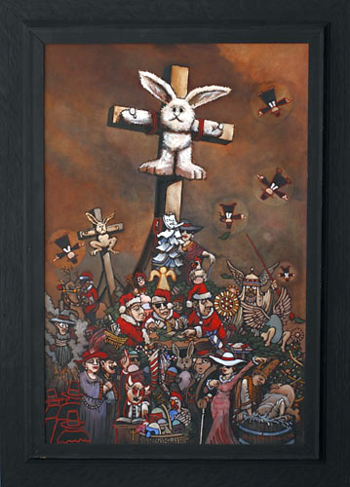
Easter Sunday is the central celebration of our faith yet I struggle more and more because it seems to me that what begins with triumphant shouts of Christ is Risen Alleluiah, and a beautiful flowering of the cross ends with an easter egg hunt.
“It’s great to see the kids so enthusiastic”, people tell me, but is it really? Is an enthusiastic sugar high really a substitute for celebrating the resurrection of Christ? Have we bought into the secular culture so much that we can no longer tell the difference?
Others struggle too. The values emphasized in the easter egg hunt are counter to kingdom values – greed, individualism and competitiveness drive kids to find more candy not to share but for themselves. And what about the symbolism, not to mention the amount of plastic that is strewn around that will just end up in the landfill.
Easter Bunny – Has It Transformed Us?
The Easter Bunny is a rabbit-spirit. Long ago, he was called the “Easter Hare”, hares and rabbits have frequent multiple births so they became a symbol of fertility. The custom of an Easter egg hunt began because children believed that hares laid eggs in the grass. The Romans believed that “All life comes from an egg.” Christians consider eggs to be “the seed of life” and so they are symbolic of the resurrection of Jesus Christ. Why we colour and decorate eggs is not certain but in ancient Egypt, Greece, Rome and Persia eggs were dyed for spring festivals as a sign of fertility.
Now I am all for taking the symbols of the culture and transforming them into the symbols of our faith, but I wonder have we transformed this symbol or has it transformed us? Are our values and our joy in the resurrection of Christ subverted by the secular culture that is all into greed, consumption and competitiveness? Do we miss out on the life that the season is meant to renew in us because we are caught up in another world view?
Having said all that I think that Holy Week and Easter Sunday in particular should be a wonderful celebration of life and faith for adults and kids. Here are some resources you might like to check out.
I add new resources to my Pinterest boards Lent and Easter with Kids and Prayer Stations with Kids on a regular basis so you might also like to check this out.
Looking for crafts
- This LEGO resurrection garden is a creative approach to the Easter story. I would prefer a real garden but it is a Strat.
- This article has some great ideas on how to create Prayer stations for Kids and they are printable.
- One of the most creative ideas for Easter week is what South Wilford Church of England Primary School in Nottingham did for Maundy Thursday. They called it Washday and had kids wash and clean both the school and their village.
- And from youthpastor.com a great suggestion for Holy week stations based on The Lord’s Prayer.
- And here is another set of Stations of the Cross for Kids that is worth looking at.
- This tin foil cross craft is also a creative project that I think would appeal to kids and adults alike.
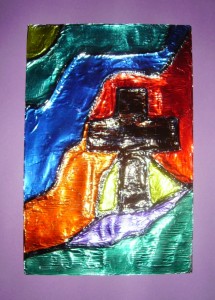
- Faith at home has some good suggestions on activities to participate in with children.
- Christian Montessori has a very good collection of cross related activities – great for storytelling and meditation.
- I also like the originality of this Holy Week in Handprints from Catholic Icing.
- And Catholic Kids has a variety of colouring pages available for children of all ages.
- Catholic Mom has helpful books and Stations of the Cross for Kids.
- Great ideas for at home celebrating from The Purposeful Mom.
- And a Messianic Passover Seder for Families with Children.
- And here are simple directions for making palm crosses.
- Check out these Seven Ideas for Holy Week at Home by Christine V. Hides.
- Resurrection Day Mini Puzzle Unit is a free download of 10 pages for pre-K to 5th grade kids.
- Or, you might like to consider making Resurrection eggs – to me a better idea than Easter eggs. You could decorate them too.
- In France, the bells, not the Easter bunny, bring the eggs: French Easter Bell craft because the bells stop ringing on Maundy Thursday and don’t ring again until the joyous sound of Easter Sunday.
Want to do some Easter gardening?
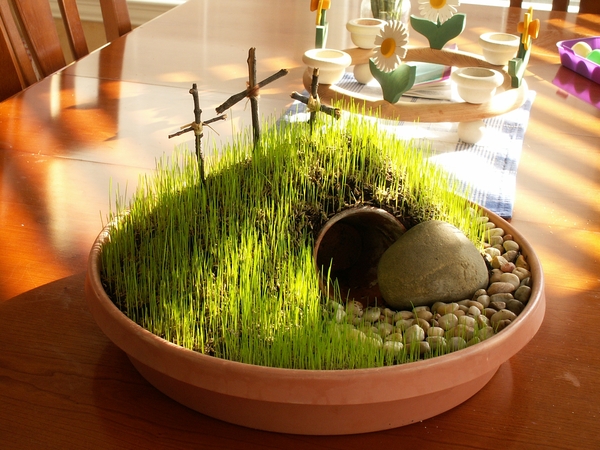
- Make this Easter grace garden with your kids.
- Or this simpler Easter Resurrection Garden
- Or perhaps this mini resurrection garden – which I love because it is a growing garden.
As you know contemplative gardens are my passion, but by Easter I am working out in the garden too much to make my own resurrection garden, though I do love to plant basil (holy basil of course) at Easter as a special symbol of the season.
Looking for recipes: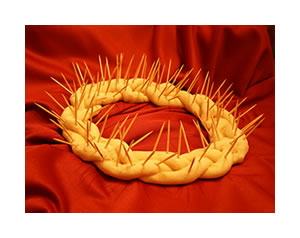
- Think of making Crown of Thorn bread or consider it as part of your whole Lenten experience
- or the traditional English treat for Good Friday Hot cross buns, which I grew up with and still like to make every year.
- And I love these creative Easter story cookies inviting kids into a sensual experience of cooking.
Looking for videos:
Share this with your kids. I love this series of videos though the accents may be a little hard for some to follow.
Or if your kids are LEGO enthusiasts this is the video for you;
Or this one:
Please check out our complete list of Godspace resources for Lent through Holy Week
As an Amazon Associate, I receive a small amount for purchases made through appropriate links.
Thank you for supporting Godspace in this way.
When referencing or quoting Godspace Light, please be sure to include the Author (Christine Sine unless otherwise noted), the Title of the article or resource, the Source link where appropriate, and ©Godspacelight.com. Thank you!

